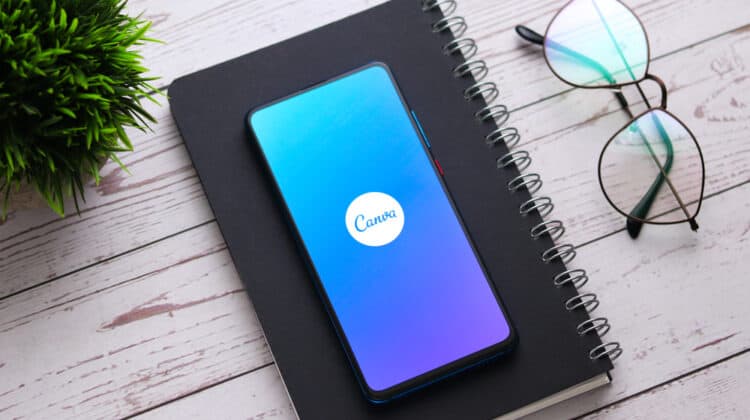
The idea of CAPTCHA (short for Completely Automated Public Turing Test To Tell Computers and Humans Apart) was developed in 2000 to protect websites and internet users from attacks by automated programs called bots.
After more than twenty years, it’s become the de facto method for blocking suspicious internet traffic and preventing distributed denial of service (DDoS) attacks.
Many websites use it to prevent spam comments, protect registration forms, and validate traffic originating from suspicious sources.
Depending on the implementation, it may ask you to type in a hard-to-read word, match pictures, or solve another sort of puzzle that robots can’t quickly solve.
You might be okay with doing one or two of these puzzles, but they become annoying when they appear everywhere.
Why does that happen?
Why Am I Getting CAPTCHA On Every Site?

You’re getting CAPTCHA on multiple sites because your online traffic behavior resembles unsafe bots.
That could include the following reasons:
- Your computer is infected with viruses or malware.
- Someone else on your network is running a bot or script.
- You’re using a virtual private network or proxy to hide your IP address.
- Your computer has received an IP address that was previously used in an attack.
- You’re using browser add-ons for security, privacy, or SEO that alter your browser’s normal behavior.
CAPTCHAs were first developed to prevent spammers from submitting malicious URLs to search engines using automated scripts.
Therefore, engineers decided to use optical character recognition to distinguish between robots and humans.
At the time, computers could only recognize clear, easy-to-read text, whereas humans had no trouble discerning distorted, misaligned characters and digits.
They devised puzzles that asked the user/bot to read a string of nearly illegible text.
An audio version was later developed, and new versions involving picture recognition and trivia questions have appeared in recent years.
CAPTCHAs have helped cut down on spam, but scammers have been highly active in finding ways to work around them.
That’s why CAPTCHA developers need to securely store the puzzle’s answer to prevent the bot from stealing it.
For example, some vulnerable CAPTCHA implementations communicate the answer to the user’s browser in plain text.
They then use a simple script to turn that text string into a distorted image shown to the user.
However, a clever hacker can write a script that accesses the unencrypted answer and tricks the CAPTCHA.
The race to stay one step ahead of robots has become frustrating for security engineers because hackers can now use machine learning to create robots that solve even the most challenging puzzles.
Google came out with a NoCAPTCHA solution a few years ago to change the landscape.
It simply asks the user to check a box without solving a puzzle.
At the same time, though, it tracks the user’s mouse movements before they click on the box.
Humans are usually less precise in their mouse movements and hesitate, whereas bots move the cursor with perfect precision.
NoCAPTCHA also considers your IP address and cookies.
It’s generally a more reliable version of CAPTCHA that many users find less frustrating.
How To Avoid CAPTCHA Appearing On Every Site

Many people jump at the chance to make a quick buck by deploying spambots.
So, it’s only logical that Google and other internet companies be very strict about their CAPTCHA policies.
In general, to avoid getting CAPTCHA on every site, you need to identify why your traffic behavior has become suspicious and eliminate the cause.
Here are the most common solutions that may fix your annoying problem.
1. Disconnect Your VPN Or Proxy

Virtual Private Networks (VPNs) and proxy servers are great tools for people who want to browse the internet anonymously or access websites banned in their country.
They switch your public IP address with another one from a different country to make it look like you’re browsing the internet from that country.
However, VPNs are also popular tools among scammers to hide their identities.
Therefore, a request from an IP address associated with a VPN is more likely to trigger a CAPTCHA prompt.
Google keeps an extensive database of known VPN IP addresses.
If you’re using a VPN, turn off your connection, wait a few minutes, and start browsing again.
Alternatively, you can connect to a different server in a different location and hope that the new IP address isn’t in Google’s databases.
How Do I Know If I’m Using A VPN?
You may be connected to a VPN without realizing it.
Maybe you’re using a shared or public computer, or someone else has installed the VPN program on your computer.
The easiest way to see if you’re on a VPN is to check your IP address.
Log on to ipleak.net and wait a few seconds until the site displays your IP and region.
If it’s different from your country, you’re on a VPN.
You can also check if you have a VPN client installed on your computer.
The most popular ones include NordVPN, Tunnel Bear, OpenVPN, Kerio, and Windscribe.
2. Restart Your Router

When your router connects to your internet company’s servers, it automatically receives an IP address via the DHCP protocol.
Google maintains an extensive database of IP addresses associated with malicious activities.
Another customer from the same company may have been assigned your current IP address in the past, and they may have conducted spammy behavior.
Now Google has flagged your current address as a potentially unsafe source and constantly asks you to solve CAPTCHA puzzles.
The easiest solution is to restart your router to make it receive a different IP address.
Hopefully, the new one isn’t on Google’s denylist.
3. See If Your IP Is Blacklisted

Many companies other than Google maintain denylists of IP addresses.
You may be fine when searching on Google, but if you open a site protected by Cloudflare, you’ll be prompted with a CAPTCHA.
You can check whether your current IP address is on a denylist.
First, log on to ipleak.net or whatsmyipaddress.com to find your current address.
Then copy the four numbers and paste them into the search box on mxtoolbox.com.
Sometimes, entire families of addresses (subnets) belonging to a company end up on the denylist because hackers exploit the company’s infrastructure.
If you see your IP is still on a denylist after rebooting your router multiple times, contact your internet service provider and ask them for assistance.
4. Check Your Computer For Viruses And Malware

Malware and viruses can use your internet connection to connect to malicious servers and attack other computers on the internet.
Because the malware sends hundreds of requests per second, server firewalls get suspicious and prompt CAPTCHAs to block these requests.
Since the malware uses your computer, the requests are sent from your IP address.
Firewalls can’t distinguish between you and the malware, so you also get multiple CAPTCHA prompts.
Install an anti-malware program such as Malwarebytes to remove malware from your computer.
It scans your device, removes the malware, and gives you real-time protection.
It works on all popular operating systems, including Windows, macOS, iOS, and Android.
You can also install Microsoft’s Safety Scanner, a portable anti-malware program designed to detect and remove malicious bots on your computer.
It works separately from Windows Defender, and it’s valid for up to ten days once you download it from the official website.
You can even run this scanner from a thumb drive if the malware doesn’t allow you to install it on your computer.
5. Clear Your Browser Cache And Cookies

Browser cookies are small text files containing information that can be used to identify different users from each other.
They usually contain a single large string of letters and digits.
Various scripts are added to your browser’s temporary storage (cache) when you browse different websites.
These scripts and cookies track which websites you browse and send the information to centralized servers that aggregate your data.
Most of those servers are harmless and track you for marketing purposes.
If you visit an unsafe website, however, you may inadvertently get infected with malicious scripts that connect to disreputable servers.
When that happens, Google can’t tell you apart from the suspicious script, so it keeps asking you to solve CAPTCHA puzzles.
The easiest solution is to clear your browser’s cookies and cache.
Here’s how you can do that on Chrome:
- Click on the three-dot icon in the top-right corner of the screen.
- Click Settings.
- Navigate to Privacy and security.
- Click on Clear browsing data.
- Set your Time range. The preferred option is “All Time,” but if your problem appeared recently, set a lower range.
- Check all the items.
- Click Clear data.
Note: You’ll be logged out of some of your accounts after clearing your browsing history.
Next, go to “Cookies and other site data” under the Privacy and Security tab and apply the following settings:
- General settings > Block third-party cookies in Incognito.
- Turn on Send a “Do Not Track” request with your browsing traffic.
- Turn on See all site data and permissions.
You can find similar settings for Firefox and other browsers.
6. Check Your Browser’s Extensions

Browser extensions allow you to add functionality to your browser that doesn’t come out of the box.
You can turn your browser into a time-tracking device, a workspace, or a place to play casual games while taking breaks from work.
However, specific extensions can cause trouble with CAPTCHAs.
These include security or privacy extensions that modify your IP address and SEO-related extensions that send out multiple search requests simultaneously.
If you have any of those extensions, disable them and restart your browser.
Continue browsing the web the way you regularly do and see if the issue persists.
You can even try an Incognito window (Private Browsing in Firefox) where most add-ons and cookies are disabled.
7. Reinstall Your Browser

If clearing your cache and tinkering with your extensions doesn’t make the problem disappear, you can fully uninstall your browser and download the latest version from the official website.
However, don’t uninstall the browser using the default Windows uninstaller because not all the settings will be removed from your computer.
Instead, use Revo Uninstaller to remove the browser without leaving a trace.
As a result, you can do a brand new install without worrying about leftover settings and conflicts.
8. Install Cloudflare’s Privacy Pass

Cloudflare is one of the world’s largest content delivery networks.
It operates hundreds of data centers around the world to help businesses, website owners, and bloggers deliver their web pages to their users faster.
It does so by maintaining copies of different web pages so that when, for example, a user from the US wants to visit a website hosted in Australia, their request doesn’t have to travel halfway around the world.
Instead, it intercepts the request and sends a copy of the page from a server located in the US.
This way, the page will load much faster for the user.
Cloudflare also keeps an eye out for suspicious behavior: too many requests originating from or going to the same IP address.
If it detects abnormalities, it sends CAPTCHA prompts to prevent bad actors from compromising the network.
To avoid multiple CAPTCHAs and improve the user experience, Cloudflare has developed Privacy Pass, an extension for Chrome and Firefox that reduces the number of prompts a user receives.
Once you pass a CAPTCHA, the extension stores your credentials and passes them to Cloudflare’s firewall for the next 30 requests.
However, the extension won’t have an effect if a site owner places their site in “I’m under attack” mode.
Moreover, the Privacy Pass only works for Cloudflare-protected websites.
You may still receive CAPTCHA prompts from Google or other websites.
9. Use Google Public DNS

Google offers a public domain name server (DNS) service to replace the DNS from your local ISP.
It’s faster and more secure and, therefore, less vulnerable to bots and malware.
The video below shows you how to change your DNS settings on Windows 10 to use Google’s DNS.
10. Don’t Search Frantically

One of the distinct behaviors of bots is that they send tens or even hundreds of requests every second.
As a human, you cannot generate that many requests that quickly.
Still, if you do too many searches too quickly, your behavior may resemble a robot in the eyes of Google’s algorithms.
They may hit you with a CAPTCHA prompt to be sure.
Be Careful About Fake CAPTCHAs

So far, we’ve talked about how CAPTCHAs make the web safer by blocking spam and preventing robots from bringing down websites.
What happens if hackers turn this helpful tool against the very users it’s supposed to protect?
Unfortunately, there are fake CAPTCHA pages that ask you to click Allow or Confirm to prove that you’re not a robot.
However, by clicking the button, you’re actually giving permission to the fake CAPTCHA to show pop-up ads from adult websites.
The ads continue to display even when your browser is closed.
Moreover, your computer may become infected with malware that hijacks your browser and redirects to websites that aren’t secure.
If this happens, you most likely won’t be able to surf the web anymore because the malware will have complete control over your browser(s).
Before clicking on a CAPTCHA confirmation button, pay attention to what the prompt asks you to do, and don’t get confused by sneaky wording.
If you fall victim to one of these websites, install a trusted anti-malware program and scan your computer fully.
Another threat to watch out for is when hackers create fake CAPTCHAs on phishing websites to give you a false sense of security.
These CAPTCHAs don’t actually do anything.
They’re just for show.
When filling out online forms, always carefully check the website’s URL and ensure it’s not a slightly different version of the genuine site you want to log on to.
You’d be surprised to find out how sneaky some hackers can be.
Never forget that no amount of software can protect you from hackers and scammers if you’re not careful about who gets access to your information.
NEXT: How To Get Karma On Reddit Fast (10 Ways)











